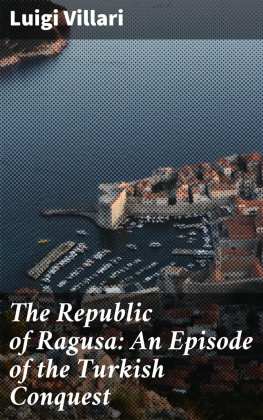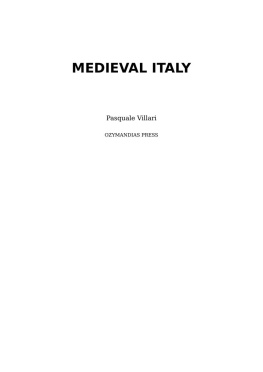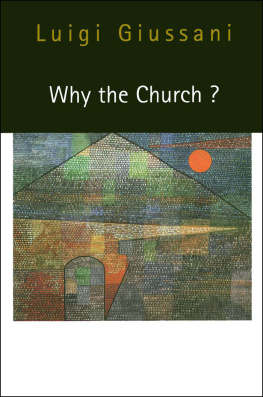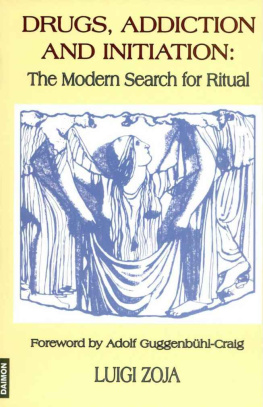Luigi Villari - The Republic of Ragusa
Here you can read online Luigi Villari - The Republic of Ragusa full text of the book (entire story) in english for free. Download pdf and epub, get meaning, cover and reviews about this ebook. year: 2020, publisher: Library of Alexandria, genre: Art. Description of the work, (preface) as well as reviews are available. Best literature library LitArk.com created for fans of good reading and offers a wide selection of genres:
Romance novel
Science fiction
Adventure
Detective
Science
History
Home and family
Prose
Art
Politics
Computer
Non-fiction
Religion
Business
Children
Humor
Choose a favorite category and find really read worthwhile books. Enjoy immersion in the world of imagination, feel the emotions of the characters or learn something new for yourself, make an fascinating discovery.

- Book:The Republic of Ragusa
- Author:
- Publisher:Library of Alexandria
- Genre:
- Year:2020
- Rating:4 / 5
- Favourites:Add to favourites
- Your mark:
- 80
- 1
- 2
- 3
- 4
- 5
The Republic of Ragusa: summary, description and annotation
We offer to read an annotation, description, summary or preface (depends on what the author of the book "The Republic of Ragusa" wrote himself). If you haven't found the necessary information about the book — write in the comments, we will try to find it.
The Republic of Ragusa — read online for free the complete book (whole text) full work
Below is the text of the book, divided by pages. System saving the place of the last page read, allows you to conveniently read the book "The Republic of Ragusa" online for free, without having to search again every time where you left off. Put a bookmark, and you can go to the page where you finished reading at any time.
Font size:
Interval:
Bookmark:

OF
RAGUSA
TURKISH CONQUEST
By LUIGI VILLARI
By WILLIAM HULTON
LONDON: J. M. DENT & CO.
29 & 30 BEDFORD STREET, W.C.
MCMIV
At the Ballantyne Press
| CHAP. | PAGE |
| I. | INTRODUCTION |
| II. | THE FOUNDATION AND EARLY HISTORY OF THE CITY (656-1204) |
| III. | VENETIAN SUPREMACY: I.THE CONSTITUTION AND THE LAWS (1204-1276) |
| IV. | VENETIAN SUPREMACY: II.SERVIAN AND BOSNIAN WARS (1276-1358) |
| V. | THE TRADE OF RAGUSA |
| VI. | ART IN THE THIRTEENTH AND FOURTEENTH CENTURIES |
| VII. | RAGUSA UNDER HUNGARIAN SUPREMACYTHE TURKISH INVASION (1358-1420) |
| VIII. | THE TURKISH CONQUEST (1420-1526) |
| IX. | TRADE AND INTERNAL CONDITIONS DURING THE HUNGARIAN PERIOD |
| X. | RAGUSA INDEPENDENT OF HUNGARY (1526-1667) |
| XI. | RAGUSAN SHIPS AND SEAMEN IN THE SERVICE OF SPAIN |
| XII. | FROM THE EARTHQUAKE TO THE NAPOLEONIC WARS (1667-1797) |
| XIII. | ART SINCE THE YEAR 1358 |
| XIV. | LITERATURE |
| XV. | THE FALL OF THE REPUBLIC |
LIST OF BOOKS ON THE HISTORY AND TOPOGRAPHY OF RAGUSA |
Font size:
Interval:
Bookmark:
Similar books «The Republic of Ragusa»
Look at similar books to The Republic of Ragusa. We have selected literature similar in name and meaning in the hope of providing readers with more options to find new, interesting, not yet read works.
Discussion, reviews of the book The Republic of Ragusa and just readers' own opinions. Leave your comments, write what you think about the work, its meaning or the main characters. Specify what exactly you liked and what you didn't like, and why you think so.









